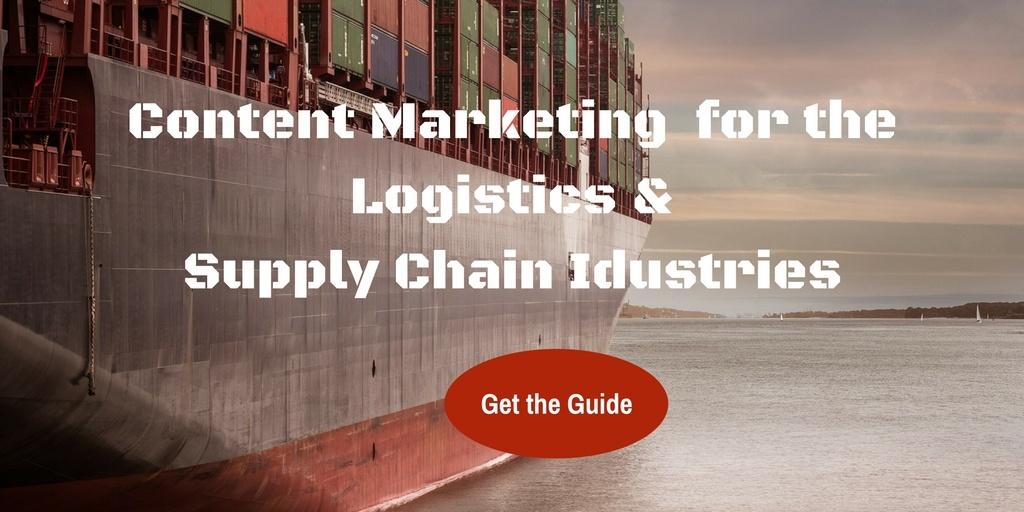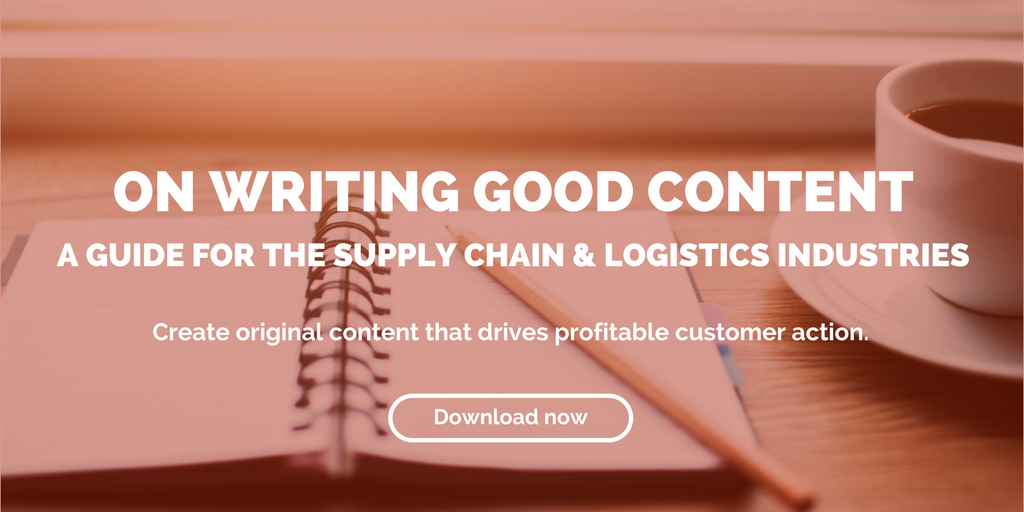
by Jennifer Hart Yim | Mar 16, 2017 | Blog, Logistics, Strategy, Supply Chain, Transportation & Trucking
Try these affordable online tools and mobile applications to help the logistics professional control their business.
This guest post comes to us from Adam Robinson, marketing manager at Cerasis, a top freight logistics company and truckload freight broker.
Logistics professionals require exemplary international online logistics tools to help them carry out their daily businesses with ease and deliver the best for their customers. For any developing business, adopting the widely used and affordable technologies is more economical. Mobile phones can offer incredible services in any business from inventory tracking and shipments to the execution of procurement transactions. Let’s base our discussion on online trucking logistics and mobile applications that can be used in supply chain management on a global basis by the logistic professional to control their business.
Top 8 Online Logistics Tools For Logistics Professionals
1. The Scandit mobile application software
Scandit is one of the top mobile online logistics tools used in international logistics in supply chain management. It is an advanced barcode scanner that is capable of extending bar code scanning to technology savvy inventory manager. Unlike other scanners, the scan in Scandal doesn’t have to be perfect to process data as it can scan hard to reach the barcodes with ease. It is also cross-platform enabled to facilitate ease of data sharing across other networks online.
2. The Easy stock mobile application software
This optimization tool for inventories is cloud based. It systematically limits access from the warehouse locations to minimize cost while maximizing on the availability of highly profitable items. It is one of the essential online logistics tools that can help managers forecast, plan the inventories, and a budget for the available resources. Most logistics prefer integrating the use of this app to automate procurement and replenish other processes to raise the profit margins.
3. The Web fleet Android application
The web fleet Android application is an incredible mobile application suitable for retaining control of the daily operations of your workforce. This app can be accessed through web browsing, where the logistic professionals can manage their business in real time just from their phones or laptops at the comfort of their seats. This application will help you track the daily operations 24 hours to ensure the credibility of your workforce and efficiency in your operations.
4. Service Max mobile app
Service Max mobile app is one of the best and top-selling apps in service management field that every logistic professional should consider using. The app combines the integration of service contracts, management of orders, workforce optimization and monitoring of social media customers. It builds an end-to-end service organization view of your relations with the clients who help you analyze the quality of your services and the reactions of the customers towards them. The feedback shared through social media, such as Twitter, by the people using your services helps you to gauge yourself and point out the areas that require improvement.
5. The Co-pilot Android mobile app
Co-pilot Android mobile app is an incredible online logistics tool employed in international logistics. It offers mapping and direction routing. It facilitates navigation through online tracking of your vehicle for efficiency. The application has additional algorithms that help the truck drivers follow efficient routes to avoid traffic and other obstacles that can delay the delivery. It is with a 100% surely that every logistic will be interested in the quick delivery of his/her business services within the shortest time possible which can be catered for using this application. The app also gives the dynamic information of the various navigation routes such as truck height and weight to ensure smooth navigation in the designated routes.
6. The Logistics mobile app
Logistics is a multipurpose free on-line Android mobile application used for on-line tracking logistics. It can be used to track drivers, shipment of goods, vehicles and client’s operations. Every logistic professional should look for this app to increase the visibility of the entire supply chain with the use of a smartphone. This incredible app will help you monitor and track your logistic operations with ease and confidence.
7. The Evernote online mobile application
Evernote, as well as Eduzaurus, has been rated as the best tool used by professional logistics in organizing important files, documents and images and is, therefore, a widespread global application in the field of supply chain management. It is widely known and used in online filing and storage of documents used in the supply chain. It has an added advantage as compared to other supply chain mobile applications due to its ability to record voice memos when you are away through an inbuilt voice recording technology. This helps the manager to track the success of the workforce when away. With this mobile application, it is a guarantee of success to the managers and logistics in file organization field.
8. The Cerasis Rater — A Web-Based Transportation Management System with Companion Mobile App
The Cerasis Rater allows you to process shipments for the following over-the-road modes:
- Less than truckload
- Small Package, also known as Parcel
- Intermodal
- Full Truckload moves
The Cerasis Rater eliminates the manual process of booking shipments. Before using online logistics tools, you’ve most likely wasted time, energy, and money trying to maintain your carrier rates, calling carriers to try and get the best price, and lost efficiency from having to keep up with paper bills of lading. The Cerasis Rater offers many automation & efficiency benefits to include:
- Process your own shipment, at any time, 24/7 through our web-based portal.
- Upload, store, and maintain your shipper address book with pre-population to maintain accuracy and save time.
- Store your custom commodities, and over time the Cerasis Rater puts the most commonly used to the top of the list for faster processing.
- Choose from multiple carriers whose rates are negotiated specifically to your needs within the system, allowing you to not waste time or energy, and to not leave money on the table at the time of shipment.
- Choose carriers based on rate, transit time, and limit of liability to ensure your cargo and your peace of mind are covered.
- Print batch freight quotes, bills of lading, invoices, and labels all within the same system.
- Create, email, and print bills of lading when you are done processing your freight shipment.
- E-mail notification options customized to your needs.
Related posts:

by Fronetics | Mar 2, 2017 | Blog, Content Marketing, Marketing, Social Media
These online benchmarking tools can give you insight into how your industry peers are performing on social media, in keyword searches, and more.
Senior Director of Strategy Kate Lee recently wrote about the importance of benchmarking your marketing performance against your competitors. To define success within your market and industry, you need to look outside what’s going on internally and compare yourself to your peers. This will also help your company identify threats and strategic opportunities.
Benchmarking gives you a context to understand how your marketing efforts are paying off. But running another set of reports and keeping track of all those metrics could be a full-time job within itself — and ain’t nobody got time for that.
The good news is there are some really effective tools available for marketers to quickly, even automatically benchmark their performance against the competition. Let’s take a look at three of these platforms below.
3 tools to benchmark your performance
1) BuzzSumo
BuzzSumo’s slogan, “Add value, be uncommon,” exemplifies its mission: to assist companies in creating the most relevant content for their individual audiences. The comprehensive content tool offers insight on what topics are trending, which influencers have the most reach, and more.
The competitor research feature will be of particular interest to those hoping to do some competitive benchmarking. It offers competitive intelligence, such as:
- What content is getting traction for my competitors?
- On what networks are they having success?
- Who is sharing their content?
- How does our content compare?
Overall this site will save you time that you would have spent compiling and analyzing data about you and your competitors.
Pricing: BuzzSumo’s pricing varies from $79-$599 per month, but there’s a free trial option to help you decide if Buzz Sumo is right for your company.
Ease of use: There’s a lot of information to digest, but the compelling data displays make it as easy as possible.
Clients: Rolling Stone, Expedia, National Geographic, IBM, Capital One
2) Serpstat
Serpstat identifies itself as the “growth-hacking tool of marketing” and the “all-in-one SEO platform for professionals.” It offers an abundance of insightful features to view your data in comparison with your competition. You can find answers to the following questions:
- What keywords are placing your competitors in the top search results?
- What does your competitors’ AdWords and paid search look like?
- What does your competitors’ strategy look like in regard to their budget, ad positions in search results, and cost-per-click for AdWords?
Pricing: Serpstat ranges anywhere from $0-$299.
Ease of use: While Serpstat provides an overwhelming amount of information, their 24/7 user-friendly chat feature makes things a little easier. They also offer a completely free demo via Skype or Google Hangouts in as little as 20 minutes.
Clients: Yves Rocher, Gift Baskets Overseas, GL Marketing
3) Rival IQ
Rival IQ offers “digital marketing analytics with a competitive edge.” Essentially, it allows you to compare your performance in social media, keyword ranking, and content against other companies. You also learn when growth in those categories happens for your company, as well as what is driving it. It answers:
- What do your social media metrics (followers, likes, etc.) look like versus your competitors?
- What do your competitors’ social biographies look like, and what are they changing?
- What do the “best” social media posts look like across your competitive landscape?
Pricing: anywhere from $299-$799. They’ll even work with you to create a customized package. A free trial is also available.
Ease of use: While the information presented is extensive, it is displayed in a way that makes it easy to digest. According to New York Times best-selling author Jay Baer, “Rival IQ is a game-changer. Incredibly useful intelligence about the digital activities and successes of your competitors, delivered quick, easy and smart.”
Clients: Studio Science, the Media Flow, Convince & Convert
These three benchmarking tools can help your business gauge how you’re fairing against the competition. The right one for your company could give you a competitive edge, helping you surpass your goals — and your competition.
Related posts:


by Fronetics | Mar 1, 2017 | Blog, Diversity, Leadership, Logistics, Supply Chain
Fronetics spoke with 6 women leaders in the supply chain and logistics industries about their professional experiences and thoughts on the gender gap.
March is Women’s History Month, a time when we at Fronetics like to focus our attention on inspiring female leaders who are bridging the gender gap in the supply chain and logistics industries.
As we have written about previously, the lack of gender diversity in the supply chain is not because women do not have the skillset and ability to succeed within the industry. In fact, quite the opposite is true.
We believe that it is important to discuss the lack of gender diversity and point to research highlighting why the industry needs to increase the number of women in all positions, including the C-suite. Additionally, it is just as important to highlight the incredible women who already are working within the industry.
We have had the opportunity to interview 6 supply chain leaders about their professional experiences, as well as their thoughts on some of these issues.
6 women leaders in the supply chain
Kendrea Durr-Smith
Director of Global Trade Compliance, Arrow Electronics
Kendrea Durr-Smith has successfully lead a diverse global team to better support the needs of Arrow customers and suppliers. In our interview, she discusses the exciting changes her team has accomplished and offers some advice for women interested in electronics and trade compliance. Read the Durr-Smith interview.
Barbara Jorgensen
Co-Founder and Managing Editor, Electronics Purchasing Strategies
Barbara Jorgensen has more than 20 years’ experience as a journalist, working for leading electronics industry publications. In our interview, she discusses working in the supply chain industry and the changes she’s witnessed — both broadly and in specific regards to gender diversity — over the course of her career. Read the Jorgensen interview.
Hailey McKeefrey
Editor-in-Chief, EBN
In her extensive and distinguished journalistic career, Hailey McKeefrey has remained enthusiastic about the supply chain industry and her role within it. She spoke with us about how the industry has changed and how women interested in holding leadership positions can seize opportunities and advance their careers. Read the McKeefrey interview.
Cathy Morris
Senior Vice President and Chief Strategy Officer, Arrow Electronics
Cathy Morris “stumbled” into the supply chain by coincidence but now holds a top-level leadership role at a Fortune 500 electronics corporation. In our interview, she discusses how she got to where she is today and how to turn each step in a career into a valuable learning experience. Read the Morris interview.
Mickey North Rizza
VP of Strategic Services, BravoSolution
Now a Top Female Supply Chain Executive, North Rizza was a bored pre-law major who switched to materials logistics management when she discovered a love for negotiating when seeking charity items for a sorority fundraiser. She spoke to us about her rise to success, people who have helped her along the way, and advice she can offer to women interested in the supply chain. Read the North Rizza interview.
Kelli Saunders
President, Morai Logistics
Kelli Saunders is a big believer in mentorship. And millennials. And opportunities for women in the supply chain. In her interview, she discusses her career, her advice, and her perspective on challenges within the industry. Read the Saunders interview.
Throughout the month of March, we plan to continue this interview series to shine the spotlight on more of the admirable women who make the supply chain and logistics industries run. Make sure you’re subscribed to our blog or following us on social media to catch them all.
Related posts:


by Fronetics | Feb 22, 2017 | Blog, Content Marketing, Marketing, Strategy
Follow these 4 steps to learn how to build a successful DIY content marketing strategy that will help grow your business.
Are you trying to create a content marketing strategy, but don’t know where to begin? Even the language around content marketing can seem foreign to newcomers. That’s why Fronetics created its guide, How to Grow Your Business with Content (download below) — to make creating a content marketing strategy possible for the DIYer in your company.
Setting your content marketing strategy is a crucial first step in trying to reach your target audience. Before you begin writing blogs and posting tweets, you need to set goals. A content marketing strategy outlines the methods by which you will target, reach, and engage your audience. Here are four steps, outlined in the guide, to creating a successful foundation to your content marketing strategy.
Steps to building a content marketing strategy
1. Identify your target audience and buyer persona(s)
Knowing who your ideal customer is allows you to create content that is informative, educational, and entertaining to that specific person. Trying to write compelling content for an unidentified audience is like taking a shot in the dark. The more detailed you can be with your buyer persona(s), the more specific and effective your content can become.
2. Define goals and objectives
Your content goals should be a direct reflection of your business goals. What do you want your content marketing efforts to accomplish for your company? The top marketing goals for content marketers in 2016 included converting contacts/leads to customers, growing website traffic, and increasing revenue derived from existing customers. Make sure you include short-term and long-term goals and that you frequently refer back to these goals to make sure your strategy is on track.
3. Developing and distributing content
Once you have identified your audience and defined your content goals, you can begin to educate yourself about the distribution platforms that will work best for your business. Let’s face it: Social media is not a one-size-fits-all solution. It’s imperative you know not only what to post but where to post it.
There are lots of great resources to help you optimize your content marketing presence. You can individualize your outreach so your blog posts are reaching one target audience, while your tweets are capturing another.
4. Put your knowledge to work
Once you have worked through the initial steps of planning a successful content marketing strategy, the real fun begins. It’s time to start pushing valuable, effective content out to consumers. If you’ve spent the time and effort up front to really thing through your strategy, you’ll reap the rewards in good time. Just remember that your strategy should be fluid, and you should be able to adjust your plans as you move forward and find what is working and what isn’t.
Pulling together a content marketing strategy for your B2B business can seem overwhelming. But having the right tools to support you can make all the difference. Download Fronetics’ easy-to-follow, step-by-step guide How to Grow Your Business with Content below to take the leap to a successful DIY content marketing strategy today.

Related posts:

by Fronetics | Feb 15, 2017 | Blog, Content Marketing, Marketing, Strategy
Ask yourself these six questions to see if you could be attracting more leads by writing better content.
All too often, marketers fall into the trap of sacrificing quality for quantity in their content writing efforts. It’s an easy mistake to make — the pressure to produce a constant stream of content can naturally lead to a drop in quality. But if you’re not writing high-quality, substantive content, you’re wasting time and energy.
If you’re wondering whether your content might not measure up, ask yourself these six questions.
Do you need better content?
1) Is my content search-engine optimized?
Since over three-quarters of today’s buyers use Google to research products, a key to making sure your content is showing up in search results is search engine optimization (SEO). This means writing copy that will be prioritized by Google in web queries related to your business or products. For ideas on SEO optimization, check out these 3 Quick SEO Tips to Improve Your Blog Right Now.
2) Am I using the right channels to reach my target audience?
In order to answer this question, you first need to have a clearly defined idea of your target audience. Once you know who you’re trying to reach, evaluate where they’re active. Analytic programs like Google Analytics and sites like Tweriod can provide valuable insights on your followers’ social media habits.
3) Am I publishing content, or a sales pitch?
Remember that content marketing is about offering valuable, expert information to your audience — it’s not an overt sales pitch. Present your readers with this kind of expertise, rather than a repeated sales pitch, and you attract loyal customers, and associate your brand with quality and value. Anything you post should be geared to meet specific needs of your customer, rather than to bludgeon them with information about your products or services.
4) Am I providing a good quality user experience?
Pay attention to format, length, accessibility, and voice. Is your business’ website visually appealing and easy to navigate? People will read your content only if it’s visually accessible and engaging.
5) Have I paid attention to performance analytics?
Be aware that what worked last year may not work this year — pay attention to performance analytics to monitor what kind of content is successful and what is no longer generating and converting leads.
6) Is my content good?
This might seem like the most obvious question of all, but it’s important to ask it every time you post. Of course, determining what constitutes good and bad content is the key here. Are you producing writing that is original, substantial, and well written? A good tool to get you started is Fronetics’ On Writing Good Content: A Guide for the Logistics and Supply Chain Industries.
Remember, your content is a reflection of your company. When potential buyers come across your blog posts or other content online, that’s how they get to know you. If it’s poorly written with mistakes and blurry images, well — you look pretty sloppy.
Quality, substantive content shows that you are an authority in your field. It will let potential buyers know that you know what you’re talking about, that you run a polished business, and that they can trust you. So while quantity is important when it comes to content, quality should never be compromised.
Related posts:










